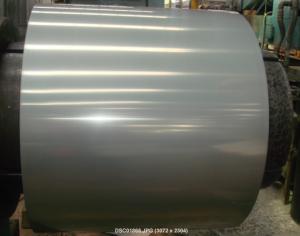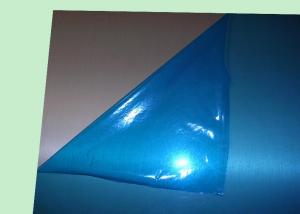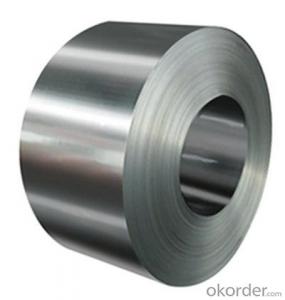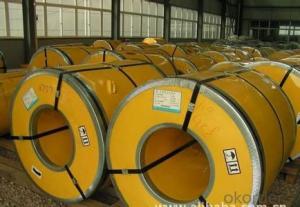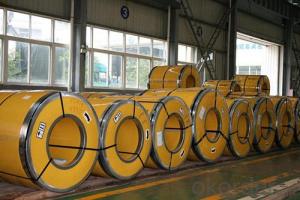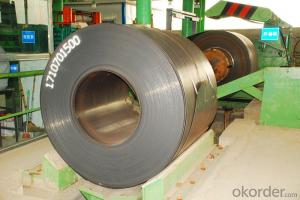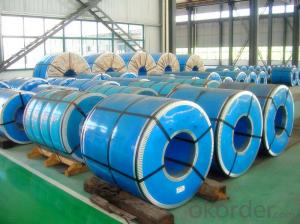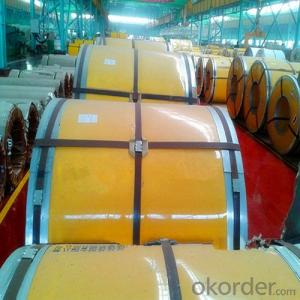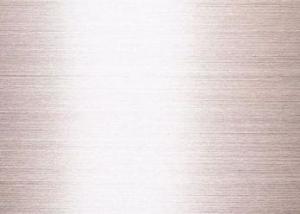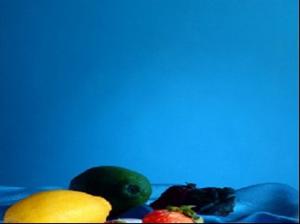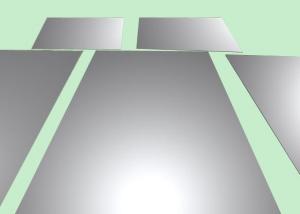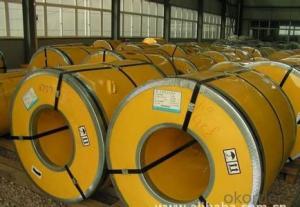Hot Rolled Stailess Steel Coil 200 Serious
- Loading Port:
- Shanghai
- Payment Terms:
- TT OR LC
- Min Order Qty:
- 25 m.t.
- Supply Capability:
- 100000 m.t./month
OKorder Service Pledge
OKorder Financial Service
You Might Also Like
Hot Rolled Stailess Steel Coil 200 Serious
1.Structure of Hot Rolled Stailess Steel Coil 200 Serious
Hot rolled stainless steel strip with good quality is one of the raw material of the cold rolled stainless steel strip, which can be used directly in many places. Stainless Steel (Stainless Steel) is short for acid-proof Stainless Steel, resistant to weak corrosive medium such as air, steam, water, or with a Stainless Steel grade.
2.Main Features of Hot Rolled Stailess Steel Coil 200 Serious
1) weldability of the hot rolled stainless steel coil 200 serious is good.
2) Corrosion resistance of the hot rolled stainless steel coil 200 serious is good.
3) Polishing performance of the hot rolled stainless steel coil 200 serious is good.
4) Heat resistant performance of the hot rolled stainless steel coil 200 serious is good.
3. Hot Rolled Stailess Steel Coil 200 Serious Images
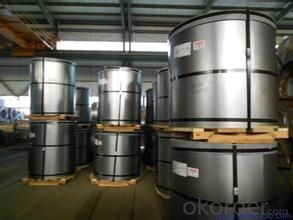

4. Hot Rolled Stailess Steel Coil 200 Serious Specification
The word "stainless steel" is not merely refers to a pure stainless steel, but said more than one hundred kinds of stainless steel industry, the development of each stainless steel has good performance in their specific applications. The key to the success of the first is to make clear purpose, and then determine the correct material. Related to architectural construction applications usually only six types of steel. They contain 17 ~ 22% chromium, good steel contains nickel. Add molybdenum can further improve the atmospheric corrosion resistance, especially containing chloride atmospheric corrosion resistance. Stainless steel often according to the state of organization can be divided into: martensite steel, ferritic steel, austenitic steel, austenitic (two-phase) - ferrite stainless steel and precipitation hardening stainless steel, etc. In addition, according to ingredients can be divided into: chromium stainless steel, chromium nickel stainless steel and chromium manganese nitrogen stainless steel, etc.
1) Ferritic stainless steel Chromium containing 15% ~ 30%. Its corrosion resistance, toughness and weldability with chromium content increases with the increase of chloride stress corrosion resistance is superior to other types of stainless steel, fall into this category of Crl7, Cr17Mo2Ti, Cr25, Cr25Mo3Ti, Cr28, etc. Ferritic stainless steel because of the high chromium content, corrosion resistance and oxidation resistance are relatively good, but the mechanical properties and process performance is poorer, more used to stress less acid structure and steel used as antioxidant. This kind of steel to withstand atmosphere, nitric acid and corrosion of the brine solution, and has good high temperature oxidation resistance, low thermal expansion coefficient, etc, used in nitric acid and food factory equipment, also can make work under high temperature parts, such as gas turbine parts, etc.
2) Austenitic stainless steel The title Chromium is more than 18%, still contain about 8% of the nickel and small amounts of molybdenum, titanium, nitrogen and other elements. Good comprehensive performance, corrosion resistant to a variety of media. Number of austenitic stainless steel is commonly used one cr18ni9, 0 cr19ni9, etc. In the Wc < 0.08% 0 cr19ni9 steel, steel grade is marked as "0". This class contains large amounts of Ni and Cr in steel, make steel in austenitic state at room temperature. This kind of steel has good plasticity and toughness, weldability and corrosion resistance and non-magnetic or weak magnetic, the corrosion resistance in oxidizing and reducing medium are good, used to make acid equipment, such as corrosion resistant containers and equipment lining, pipelines, nitric acid resistant equipment parts, etc., also can be used as the main body of watches and clocks jewelry stainless steel material. Austenitic stainless steel with solid solution treatment, the steel heating to 1050 ~ 1150 ℃, then water-cooled or air-cooled, for single-phase austenitic organization.
3) Austenitic, ferritic duplex stainless steel The advantages of both austenitic and ferritic stainless steel, and has the superplasticity. Austenite and ferrite The title Each accounts for about half of the stainless steel. In the case of contain low C, Cr content was 18% ~ 18%, Ni content at 3% ~ 3%. Some steel containing Mo, Cu, Si, Nb, Ti, N and other alloying elements. This kind of steel both austenite and ferrite stainless steel, the characteristics of compared with ferrite, plasticity and toughness is higher, no room temperature brittleness, intergranular corrosion resistance and welding performance were significantly increased, while maintaining a ferritic stainless steel of 475 ℃ brittleness and high thermal conductivity, has the characteristics of superplasticity. Compared with austenitic stainless steel, high strength and resistance to intergranular corrosion and resistance to chloride stress corrosion is improved obviously. Duplex stainless steel has excellent resistance to pitting corrosion performance, is also a kind of nickel and stainless steel.
4) Precipitation hardening stainless steel For austenitic or martensite structure matrix, and the number of precipitation hardening stainless steel commonly used such as 04 cr13ni8mo2al. It can pass the precipitation hardening (also known as the age hardening) dealing with the hard (strong) of stainless steel.
5) Precipitation hardening stainless steel For austenitic or martensite structure matrix, and the number of precipitation hardening stainless steel commonly used such as 04 cr13ni8mo2al. It can pass the precipitation hardening (also known as the age hardening) dealing with the hard (strong) of stainless steel.
5.FAQ of Hot Rolled Stailess Steel Coil 200 Serious
We have organized several common questions for our clients,may help you sincerely:
①How about your company?
A world class manufacturer & supplier of castings forging in carbon steel and alloy steel,is one of the large-scale professional investment casting production bases in China,consisting of both casting foundry forging and machining factory. Annually more than 8000 tons Precision casting and forging parts are exported to markets in Europe,
②How to guarantee the quality of the products?
We have established the international advanced quality management system,every link from raw material to final product we have strict quality test;We resolutely put an end to unqualified products flowing into the market. At the same time, we will provide necessary follow-up service assurance.
③Could I have an example of description of your products?
Detailed Information
| Product | 200 series hot rolled stainless steel |
| Grade | 202 (1.4373) 201 (1.4372) |
| Standard | ASTM,AISI,JIS,GB,DIN,etc. |
| Surface | hot rolled |
| Thickness | 3-120mm |
| Width | 1000/1500/2000mm or as your demand |
| Length | 1000-6000mm or as your demand |
| Surface technique | hot rolled |
| Finish | No1,polish |
| Origin | China |
| Delivery | 7-15 days after the order |
| Packing | Export standard package The inner size of container is below: 20 ft GP:5.8m(length)x 2.13m(width)x 2.18m(high) about 24-26 CBM 40 ft GP:11.8m(length)x 2.13m(width)x 2.72m(high)about 68 CBM |
| Application | Medical equipment, Food industry, Construction material, Kitchen utensils,Electric equipment,Decoration industry,Metallurgy, Electric warmer plate and so on. |
Could I have an example of description of Chemical Composition?
| grade | C | Cr | Ni | Mn | P | S | Mo | Si | Cu | N | Other |
| 201 | ≤0.15 | 16.00-18.00 | 3.50-5.50 | 5.50-7.50 | ≤ 0.060 | ≤ 0.030 | - | ≤ 1.00 | - | ≤0.25 | |
| 202 | ≤0.15 | 17.00-19.00 | 4.00-6.00 | 7.50-10.00 | ≤ 0.060 | ≤ 0.030 | - | ≤ 1.00 | - | ≤0.25 |
Could I have an example of description of standard?
| ASTM | USA | Ameirican Society of Mechanical Engineers |
| AISI | USA | Acronym of American Iron and Steel Institute |
| JIS | JP | Japanese Industrial Standards |
| DIN | GER | Deutsches Institut für Normung e.V. |
| GB | CHINA | GUO BIAO |
- Q: Can stainless steel strips be used in telecommunications applications?
- Yes, stainless steel strips can be used in telecommunications applications. They are often used for cable management and support purposes due to their durability, corrosion resistance, and high strength properties. Additionally, stainless steel strips can provide electromagnetic shielding, which is crucial in minimizing interference and ensuring optimal performance in telecommunications equipment.
- Q: How do stainless steel strips perform in abrasive environments?
- Stainless steel strips are renowned for their exceptional performance in abrasive environments, thanks to their unique composition featuring a significant chromium content. This composition grants stainless steel strips excellent resistance against corrosion, oxidation, and wear, making them highly durable and capable of enduring the harsh conditions typically found in abrasive environments. The presence of chromium in stainless steel strips creates a protective layer known as a passive film on the surface. This film acts as a barrier against corrosive elements and possesses the remarkable ability to self-repair. If the passive film becomes damaged, it will swiftly regenerate, further enhancing the strip's resistance to abrasion. Additionally, the mechanical properties of stainless steel strips contribute significantly to their success in abrasive environments. With high tensile strength and toughness, these strips can withstand the impact and forces exerted by abrasive particles. As a result, stainless steel strips are ideal for applications that involve constant contact with abrasive materials, such as in the mining, construction, or manufacturing industries. Moreover, stainless steel strips are available in a variety of grades, each tailored to meet specific requirements. For instance, duplex stainless steels exhibit superior resistance to pitting and crevice corrosion, making them particularly well-suited for extremely corrosive abrasive environments, such as those found in marine or chemical processing industries. In summary, stainless steel strips excel in abrasive environments due to their corrosion resistance, self-repairing passive film, and high mechanical strength. Their ability to withstand wear and tear makes them a dependable choice for applications where constant exposure to abrasive substances is anticipated.
- Q: Can stainless steel strips be bent or shaped?
- Yes, stainless steel strips can be bent or shaped. Stainless steel is a highly malleable material, meaning it can be easily manipulated into various forms and shapes. With the proper tools and techniques, stainless steel strips can be bent, curved, or formed into a desired shape. The bending or shaping process typically involves using specialized machines such as press brakes, rollers, or mandrels, which apply force to the stainless steel strip to achieve the desired shape. Additionally, the thickness and tempering of the stainless steel strip can also affect its bendability and shapeability. Overall, stainless steel strips offer a great amount of flexibility and can be easily manipulated to fit various applications and designs.
- Q: Can stainless steel strips be used in the production of marine propellers?
- Marine propellers can benefit greatly from the inclusion of stainless steel strips. This material is widely favored in marine applications because of its remarkable ability to resist corrosion and endure harsh conditions. Propellers in particular face the constant threat of degradation and corrosion due to exposure to saltwater. However, by incorporating stainless steel strips, propellers can effectively withstand the corrosive effects of saltwater, leading to enhanced longevity and superior performance. Moreover, stainless steel boasts exceptional strength and fatigue resistance, making it an ideal choice for propeller blades that must endure the forces and vibrations associated with marine propulsion. All in all, stainless steel strips are a suitable and practical option for the production of marine propellers, given their resistance to corrosion, durability, and strength.
- Q: What are the factors affecting the weldability of 111 stainless steel strips?
- The weldability of 111 stainless steel strips can be influenced by various factors. 1. The composition of the stainless steel strips, including the levels of carbon, chromium, nickel, and other alloying elements, can have a significant impact on their weldability. Higher carbon content can make the strips more prone to cracking during welding, while the presence of certain alloying elements can enhance their weldability. 2. The weldability of stainless steel strips can be affected by the heat input during welding, which is determined by the combination of current, voltage, and travel speed. Excessive heat input can cause the material to overheat, resulting in distortion, loss of corrosion resistance, and even cracking. 3. Proper surface preparation, including thorough cleaning and removal of contaminants, is crucial to ensure good weldability. Additionally, post-weld treatments such as annealing or stress relieving may be necessary to minimize distortion and reduce residual stresses that could compromise the integrity of the weld. 4. The choice of welding process, such as gas tungsten arc welding (GTAW) or gas metal arc welding (GMAW), can impact the weldability of stainless steel strips. Certain processes may require specific shielding gases or filler materials to achieve optimal weld quality. 5. The design of the joint, including its type and dimensions, can also influence the weldability of stainless steel strips. Proper joint design can ensure proper fit-up and decrease the likelihood of weld defects, such as lack of fusion or excessive porosity. 6. The skill and technique of the welder play a significant role in achieving good weldability of stainless steel strips. Correct welding techniques, such as maintaining the appropriate arc length, controlling the heat input, and ensuring consistent travel speed, are essential for producing sound and defect-free welds. By considering these factors and implementing suitable measures, the weldability of 111 stainless steel strips can be optimized, resulting in high-quality welds with excellent mechanical properties and corrosion resistance.
- Q: Can stainless steel strips be used for solar panel frames?
- Yes, stainless steel strips can be used for solar panel frames. Stainless steel is known for its strength, durability, and resistance to corrosion, making it a suitable material choice for solar panel frames that need to withstand outdoor conditions. Additionally, stainless steel's high melting point and ability to handle thermal expansion make it well-suited for solar panel frames that are exposed to high temperatures.
- Q: Can stainless steel strips be used in the brewing industry?
- Yes, stainless steel strips can be used in the brewing industry. Stainless steel is a popular material choice in the brewing industry due to its corrosion resistance, durability, and hygienic properties. Stainless steel strips can be used for various applications in breweries, including equipment fabrication, tanks, piping, and fittings.
- Q: What are the typical dimensions of stainless steel strips?
- The typical dimensions of stainless steel strips can vary depending on the specific application or industry. However, in general, stainless steel strips are commonly available in thicknesses ranging from 0.01 to 3.0 millimeters (or 0.0004 to 0.118 inches) and widths ranging from 10 to 600 millimeters (or 0.39 to 23.62 inches). These dimensions are often standardized by manufacturers and suppliers to meet the needs of various industries such as automotive, construction, and manufacturing. It is important to note that specialized industries or custom orders may require stainless steel strips with different dimensions outside of these typical ranges.
- Q: Can stainless steel strips be used for magnetic applications?
- Yes, stainless steel strips can be used for magnetic applications. However, it should be noted that stainless steel is not inherently magnetic and requires specific treatments or alloys to become magnetic.
- Q: Can stainless steel strips be used in the renewable energy industry?
- The renewable energy industry can indeed utilize stainless steel strips. Stainless steel is a remarkably versatile and durable material that provides exceptional resistance to corrosion and longevity. As a result, it is well-suited for a wide range of applications within renewable energy systems. One prevalent application of stainless steel strips in the renewable energy sector is in the production of solar panels. These strips are often employed as reflectors or for bonding solar cells together. This is due to their ability to withstand weathering and moisture. Additionally, stainless steel strips can serve as framing and mounting structures in solar panel installations, offering a robust and reliable support system. Another use of stainless steel strips in the renewable energy field is in the construction of wind turbines. These strips are commonly utilized in the manufacturing of turbine blades, which require materials capable of withstanding high winds, corrosion, and fatigue. Stainless steel's strength and resistance to corrosion make it an ideal choice for this purpose, ensuring the turbines' longevity and performance. Apart from solar panels and wind turbines, stainless steel strips can also find applications in other renewable energy technologies such as hydropower, geothermal, and biomass systems. They can be employed for various purposes, including heat exchangers, piping, and structural components, where their resistance to corrosion and mechanical properties offer significant advantages. In conclusion, stainless steel strips provide numerous advantages that make them well-suited for use in the renewable energy industry. Their durability, corrosion resistance, and versatility make them an excellent choice for various applications, enabling efficient and sustainable generation of renewable energy.
Send your message to us
Hot Rolled Stailess Steel Coil 200 Serious
- Loading Port:
- Shanghai
- Payment Terms:
- TT OR LC
- Min Order Qty:
- 25 m.t.
- Supply Capability:
- 100000 m.t./month
OKorder Service Pledge
OKorder Financial Service
Similar products
Hot products
Hot Searches
Related keywords






